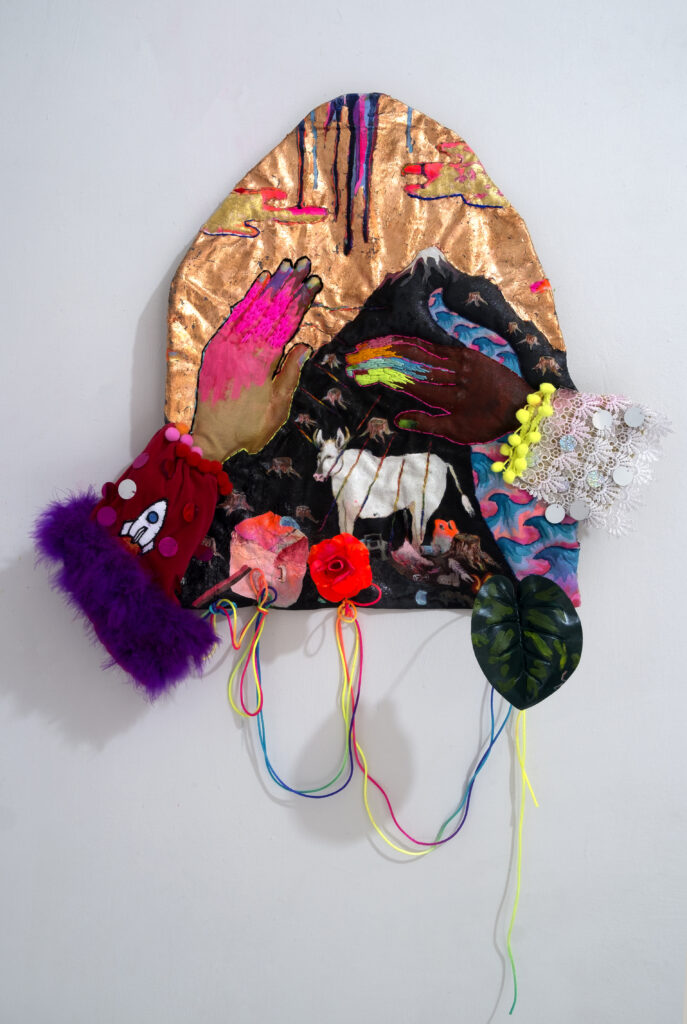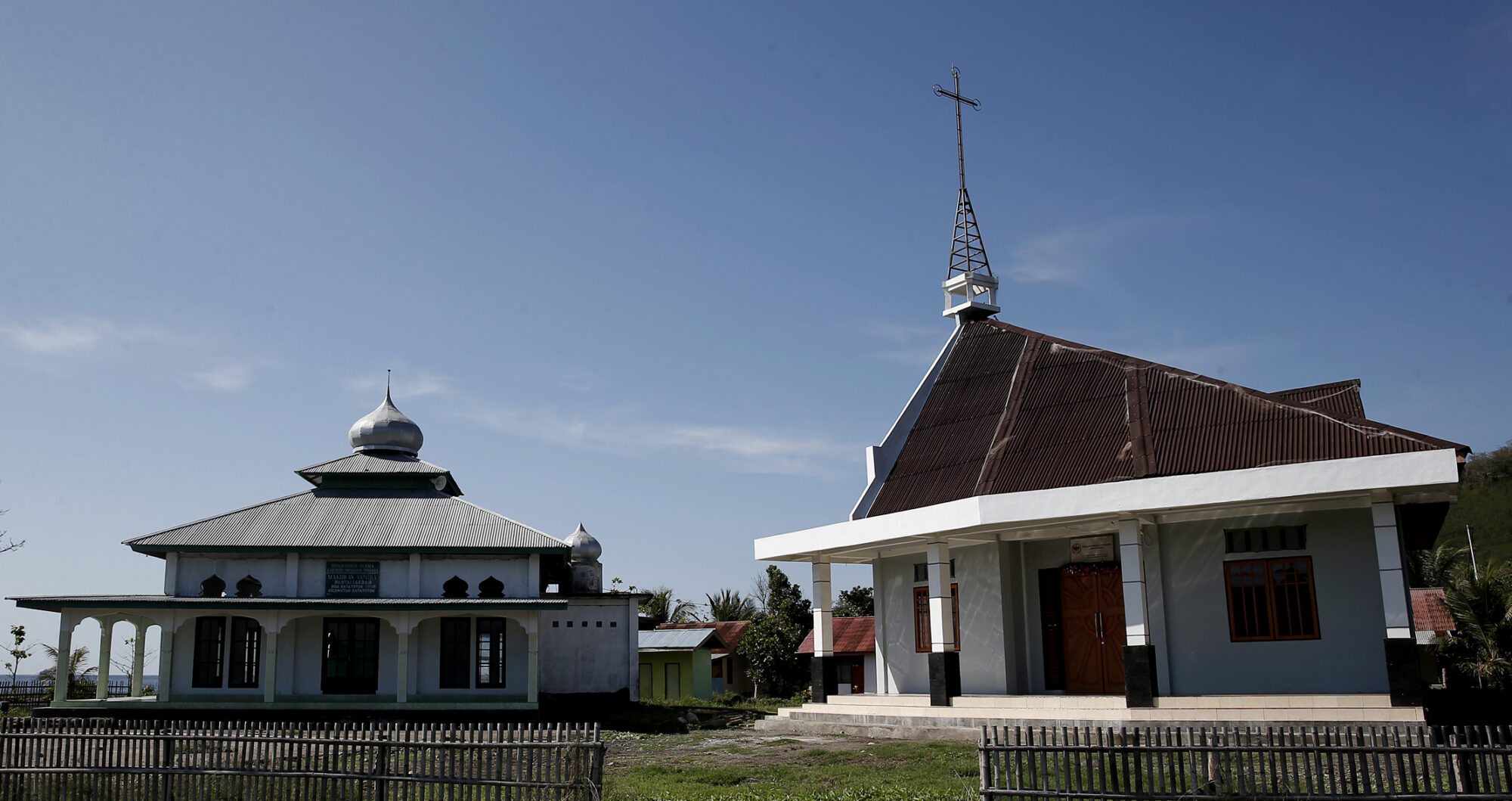

Healing is a deeply rooted human longing. Healing creates balance with other beings and information in non-consciousness-producing elements (e.g., buildings, stones, textiles). Religion and spirituality are tools to find meaning and to bring people into harmony with their direct and indirect surroundings.
The current situation of the planetary ecosystem – human’s environment – is alarming and far from the definition of health or healthy coexistence.[1] The current economic system is purely based on profit. It glorifies profits of individuals or small groups and ignores the fact that the planet itself is an organism. However, this organism actually relies on the welfare of all of its elements in order to be able to bloom as a whole. All organs are in constant contact and exchange energy, although not all elements might be aware of this.
The textile-based relief “Healing” shows a bare, deforested mountain, at the foot of which stands a cow in the midst of waste. A small fire burns next to the remains of human consumption. A discarded fridge, an old portable radio, plastic bags – all products designed to make people’s lives more comfortable. Discarded from the human context, the components of the devices are harmful to the soil and the water cycle. The watercourse to the right of the cow, coming from the top of the mountain, is partly glowing in poisonous pink. There are no trees left, only the bare stumps testify to unconscious, short-term planned actions of humans. But the hands in the front give hope. As if trying to transfer energy, the palms of one brown and one white hand are opened towards the landscape. In the age of the Anthropocene, it is the duty of the global human community to coordinate complex actions in order to ensure the quality of life on this planet for future generations. This includes the preservation of flora, fauna, and the water quality of the oceans, freshwater reservoirs and soils. Healing can happen on a global level through honest sharing of knowledge on all levels.
Circular economy provides the basis for ecologically and socially oriented interactions. It is the best way to show the need for an open heart, coupled with a creative spirit in our age of transformation. The background of my work appears in transcendent copper and gold. In addition to the background colour, the semi-circular shape of the artwork that reminds of a church window, reinforces the sacred character of the work. However, no biblical scenes or themes from other holy books are depicted, but the defaced environment itself. Every element of the cosmos testifies to God through its existence. It is the shadow in the mirror – the mirror is God.[2]
The environment continues to exist and is constantly changing. It is up to humans to maintain this environment in such a way that humans can thrive in it. In the Javanese tradition, there are techniques to push people to their limits and to expand the frequencies of perception. This includes a range of different types of fasting, meditation, physical exercises, planned sleep deprivation, as well as knowledge of plants and sacred places. This arduous but fruitful path opens a broad and holistic understanding of human existence. It shows a life plan carried by the pursuit of the greatest possible comfort in a dull light. If it is possible for a person to achieve his divine nature through the understanding of Manunggaling kawulo gusti, everyone understands their real greatness, their inner wealth, their power, regardless of what they call their own. Only this state enables people to act selflessly as a Bodhisattva, or in the Javanese tradition as Tapa Ngrame[3] for the benefit of all.
[1]With reference to the definition of health in the Javanese context; Dissertation Konsep see menurut perspektif budaya jawa http://repository.unair.ac.id/32854/8/32854.pdf
[2]Reference to Ketika Tuhan Bersatu Diri, Makna Spriritualitas Sejati Menurut Syekh Siti Jenar, 2007, Ki Reksa Bawana; p.46
[3]http://bwiwoho.blogspot.com/2015/03/filosofi-topo-ngrame-mati-sakjroning.htm
